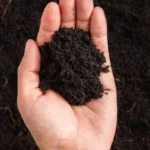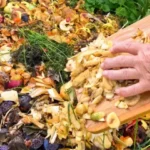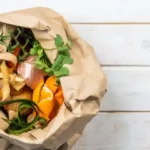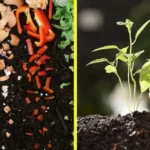A lot of backyard gardeners are interested in self-sustainability. Like other gardeners, you can reduce waste and have started a compost pile. So, you might be wondering what you can put in it. I enjoy snacking on pistachios, which can leave quite a pile of shells behind. So, if you are asking the age-old questions, can you compost pistachio shells, the answer is more complicated than you’d think. Let’s go over the science together!
Pistachio shells can be composted and are rich in carbon to help your pile decompose properly. Crush the pistachio shells to speed up decomposition. Add a balanced mix of greens and browns to a compost pile, or carbon and nitrogen, respectively. Additionally, pistachio shells in the compost help enhance soil aeration, drainage, while providing valuable nutrients.
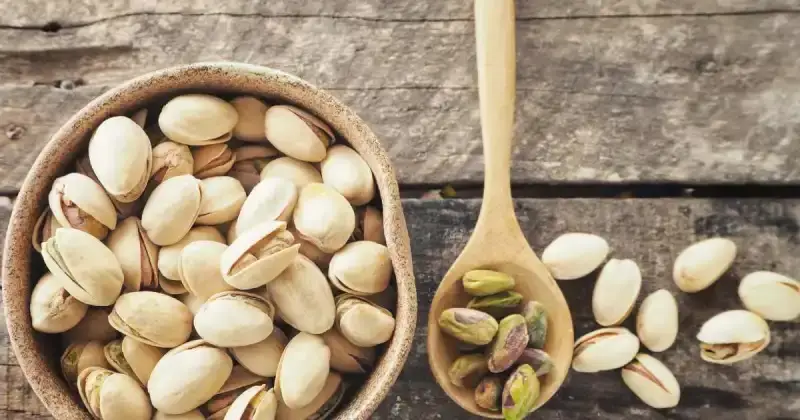
Whether you’re an avid gardener, an environmental enthusiast, or simply a fan of pistachios, in this article, we’ll dive into the science, advantages, and methods of starting a compost pile at home with these unique shells.
I’ll go into the details on how to specifically add shells to your compost pile, how long pistachio shells take to decompose if appropriately prepped, and the benefits these shells give to your garden and the surrounding landscape. So, grab your favorite nutcracker, and let’s get cracking!
Humble Highlights
- Explore these 6 surprising benefits of composting with pistachio shells to enrich your compost heap and offer valuable nutrients to your garden!
- Discover how pistachio shells are sustainable and environmentally friendly in your compost and garden to revitalize your soil and boost your crop’s nutrition.
- Save time by discovering how to compost pistachio shells with this step-by-step guide so you can confidently build your compost pile and feed your plants all season long!
Pistachio Nut Shells: An Indispensable Addition To Your Garden Compost
In the world of gardening, mature compost is often referred to as “Black Gold.” Fortunately, pistachio shells can be an excellent added ingredient for your backyard source. This section will explain how these shells can be a boon to your compost pile and, by extension, your garden’s overall health.
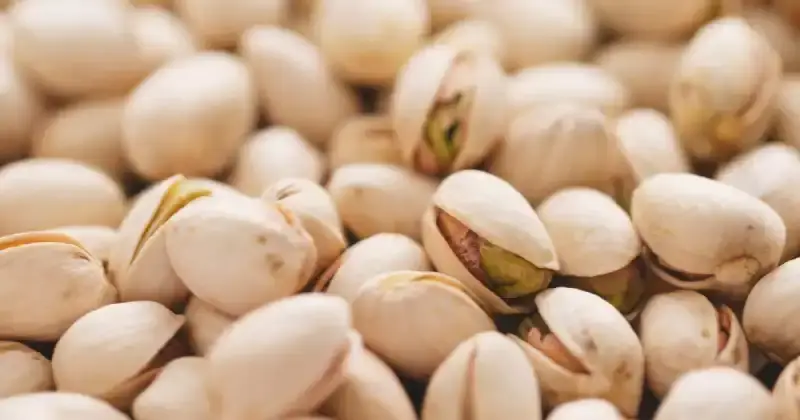
Benefits Of Composting Pistachio Nut Shells
- Rich in Carbon: Carbon is one of the two main components of compost (the other being nitrogen). Carbon helps to balance the compost pile by providing a stable environment for the microorganisms that break down the organic matter within your heap.
- Potassium and Phosphorus: As they break down, pistachio shells release nutrients like potassium and phosphorus into your pile to help resupply garden soil with these nutrients.
- Enhanced Soil Aeration: The hard structure of the shells adds bulk to the compost, aiding in aerating the soil and allowing plant roots to breathe once spread throughout your garden. 1
- Improved Drainage: Just like improving the aeration, the unique shell texture helps with soil drainage, preventing water-logging issues
- Slow Decomposition: As the shells are hard and woody, they decompose slowly, providing long-term benefits to the compost due to a more sustained release of nutrients into the soil over time.
- Anti Slug: One of the many benefits of composting pistachio shells is that the shells can act as a natural deterrent to soil pests such as slugs and snails, as these slimy critters dislike the shells’ sharp edges.
Fortunately, you don’t need fancy equipment or specialized knowledge to start composting pistachio shells. A simple pile or compost bin and some basic understanding and balancing of basic green and brown materials can get you started on the right track in your backyard.
Compostable vs. Biodegradable: The Case For Pistachio Shells
Pistachio shells are both compostable and biodegradable. Composting is a natural process where microbes break down organic matter into nutrient-rich humus. Biodegradation is the process by which living organisms break down organic matter into simpler forms. Both processes occur naturally in the wild and can be replicated through human intervention.
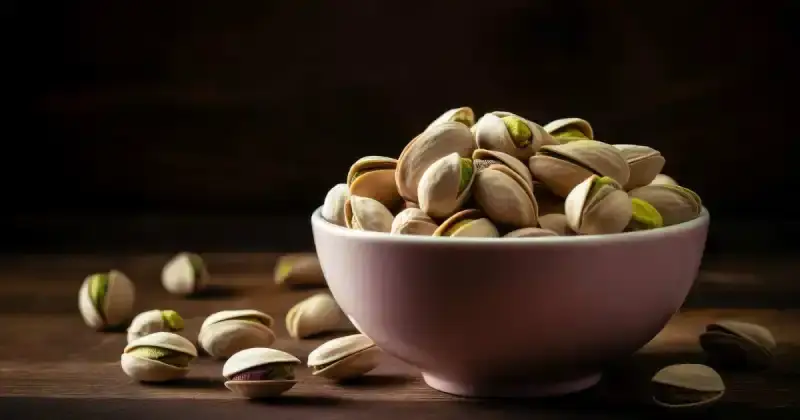
When it comes to composting, pistachio shells are carbon-rich and considered a valuable source of carbon and nitrogen, which are essential for composting. As the shells break down, they release nutrients, helping to enrich the soil.
Regarding biodegradation, pistachio shells are comprised of cellulose fibers, which are susceptible to certain fungi and bacteria degradation. Over time, these organisms will break down the shells into simple sugars and other compounds, which can then be absorbed by plants or further decomposed by other organisms. 2
Overall, pistachio shells are a sustainable and environmentally friendly resource that can add structure to your compost and benefit your garden and its ecosystem. Biodegrading or composting pistachio shells reduce our reliance on synthetic fertilizers and pesticides while also contributing to the health and vitality of our planet.
The pistachio shell acts as a natural protector for the nut inside, keeping it safe from pests and environmental factors. It’s a perfect example of how nature packages its produce in a sustainable and biodegradable way.
Pistachio Shells: How You Can Use Them To Revitalize Your Soil
Pistachio shells are rich in nutrients such as potassium, phosphorus, and calcium, essential for plant growth. When added to your garden’s soil, pistachio shells can help improve its structure, increase water retention, and provide slow-release and nutrient-dense fertilizer over time. As they break down, the shells can also help aerate the soil and promote healthy microbial activity.
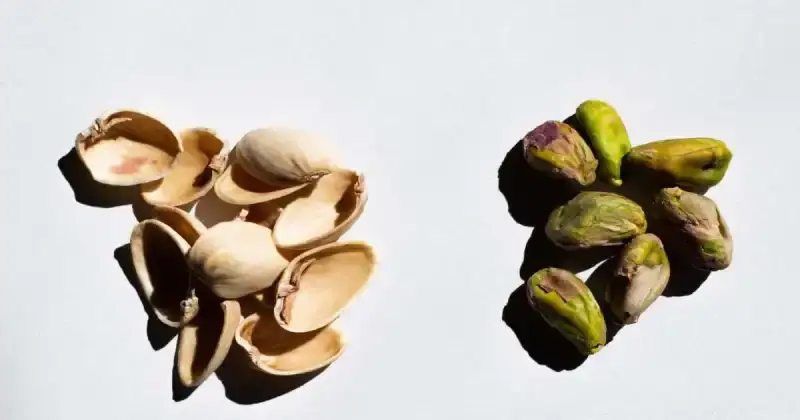
It’s important to note that while pistachio shells are suitable for the soil, they should be used in moderation and not as a total replacement for other organic fertilizers or compost. 3
Pistachios don’t provide the comprehensive range of nutrients and microbial activity that other organic fertilizers or composts offer, which is vital for optimal soil health and plant growth. Over-reliance on pistachio shells could lead to nutrient imbalances or deficiencies in your compost and garden soil when applied.
Composting Pistachio Shells Step-By-Step
Composting is a sustainable method to turn organic waste into valuable soil nutrients. Pistachio shells in your compost might seem unconventional, but they can benefit the mix. Adhering to these specific steps can seamlessly integrate these shells into your compost.
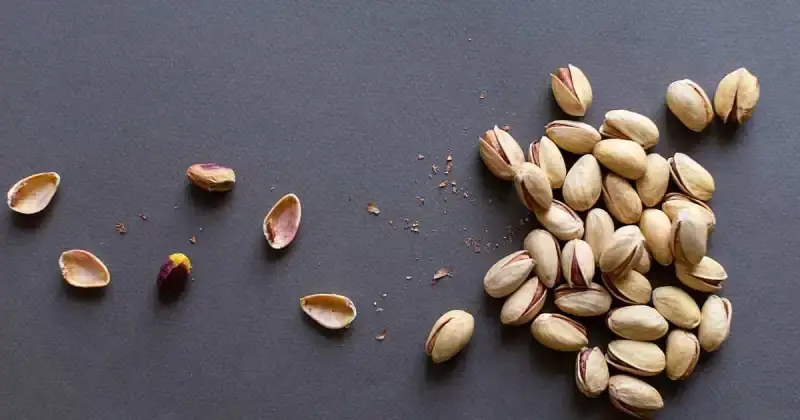
Proper preparation and maintenance ensure that the compost remains balanced and healthy. However, monitoring its progress and making necessary adjustments are critical. Ultimately, this enriched compost provides your garden with the nourishment it needs. Here is the step-by-step way to compost pistachio shells:
Clean The Shells
Remove any remaining bits of the pistachio nut to prevent attracting pests and ensure consistent decomposition. Nut bits can introduce mold foul odors, attract pests, and create nutrient imbalances within the compost pile.
Crush Or Soak The Shells
Pistachio shells are hard. Break them into smaller pieces using a hammer, or soak them overnight to soften them. 4
Prepare Your Compost Pile
Ensure you balance green (nitrogen-rich, like fruit and vegetable scraps) and brown (carbon-rich, like dried leaves, cardboard, and pistachio shells) materials. If your pile is balanced appropriately, it should have a sweet, pleasing, and earthy smell and be moist but not overly saturated.

Add The Shells
When adding pistachio shells to the compost, layer them between green materials, ensuring they are well-integrated. For example, you can add a layer of vegetable scraps, then a layer of pistachio shells, followed by more green materials. Wear gloves when handling the shells, as they can be sharp and uncomfortable, even if you’ve softened them beforehand.
Keep It Moist
A compost pile should be as damp as a wrung-out sponge to facilitate microbial activity. Monitor your compost heap and adjust moisture levels or add more greens or browns as needed. If it feels too dry, sprinkle some water; if it is too wet, add more brown materials for greater absorption.
You can perform a simple test called the squeeze test. Take a handful of compost material and squeeze it firmly in your hand. If water drips out, then your pile has enough moisture. If no water comes out, then your pile needs more.
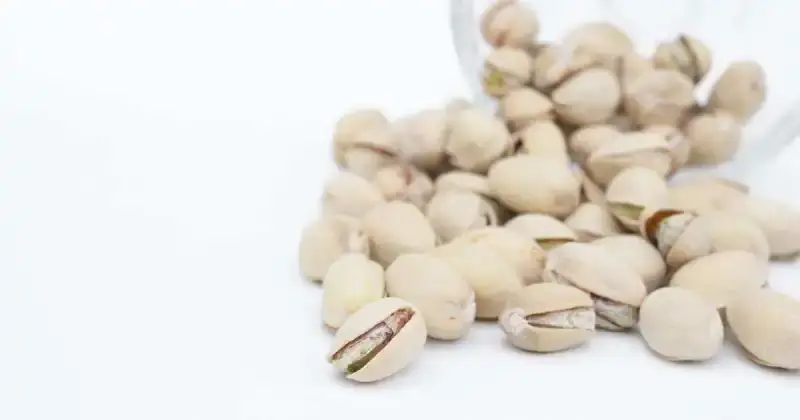
Aerate The Pile
Use a garden fork or shovel to turn and mix the compost compost heap every few days, or once a week to mix the top and bottom layers together. To speed up decomposition, ensure your pile has an adequate oxygen supply.
Harvest Compost
Once the compost is dark and crumbly, it is ready to use in your garden. Depending on the size of your pile, its moisture content, your region’s temperature, and the balance of greens (nitrogen) and browns (carbon), you can have available compost in your garden in a few short weeks. Regardless of how long it takes your compost to mature, it is best to wait until the compost has had time to break down completely before using it. 5
Compost can also be used as a mulch around plants to help suppress weeds and retain moisture. Its dense and organic nature creates a barrier that makes it difficult for weeds to penetrate and grow, reducing the need for frequent weeding. Additionally, the compost layer helps regulate soil temperature and slows the evaporation process, ensuring that plants have a consistent supply of moisture, especially during dry periods.
Pistachio Shells Decomposition: A Waiting Game
The decomposition rate of pistachio shells depends on several factors, including the composting method used, the size and age (older shells may take longer to break down than younger ones) of the shell pieces, and the moisture content within your compost pile.
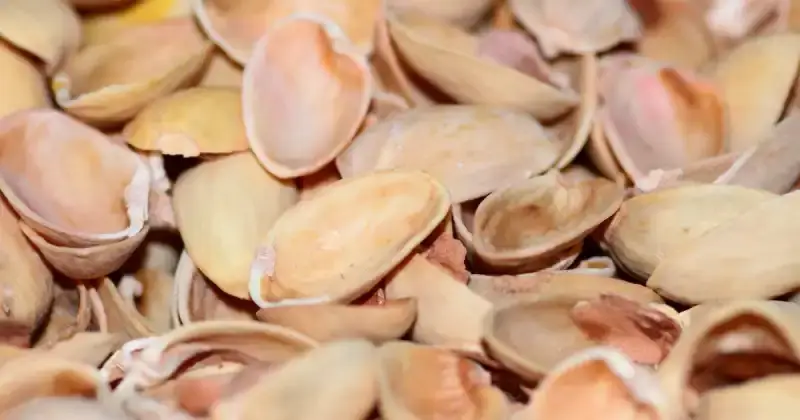
In general, pistachio shells can take about 6 months to 1 year for the shells to fully decompose in a well-managed compost pile, but may take a bit less if you’ve thoroughly crushed or ground the shells. 6
If you are using a traditional composting system, such as a backyard compost bin or pile, it may take longer for the shells to break down completely. This discrepancy occurs because conventional composting methods rely on heat generated by microorganisms breaking down organic matter, and pistachio shells are relatively dense and tough.
On the other hand, the decomposition process may be faster if you use an accelerated composting method, such as vermicomposting or bokashi fermentation. These methods use specific types of bacteria and worms to speed up the breakdown of organic matter, including pistachio shells.
Tips To Speed Up The Decomposition Of Pistachio Shells
When it comes to composting pistachio shells, patience is vital. However, there are a few tricks to expedite the process and make those shells break down quicker. Let’s delve into some tips for composting pistachio shells that can help you turn those tough nuts into nutrient-rich compost in no time.
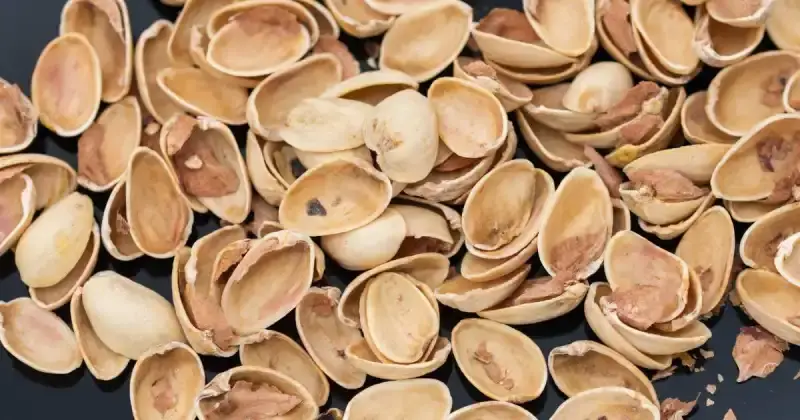
Crush The Shells
Don’t just toss the shells directly into the compost. Since they take time to decompose, breaking them into smaller pieces increases the surface area for microbes to work on, speeding up decomposition.
Soak The Shells Overnight
Hard pistachio shells soften once soaked, making them easier to break down in a compost pile. This decomposition occurs because the water helps to hydrate the shells, making them more pliable and susceptible to decay. Additionally, soaking the shells in water can help remove any residual oils or debris that might slow down the decomposition process. 7
Use Compost Accelerators
These are commercially available products designed to speed up composting. They usually contain a mixture of microbes and enzymes. Some popular options include (1) Convino Compost Starter/Accelerator and (2) Biomaster Compost-It Compost Accelerator. Make sure to follow the manufacturer’s instructions for application rates and frequency.
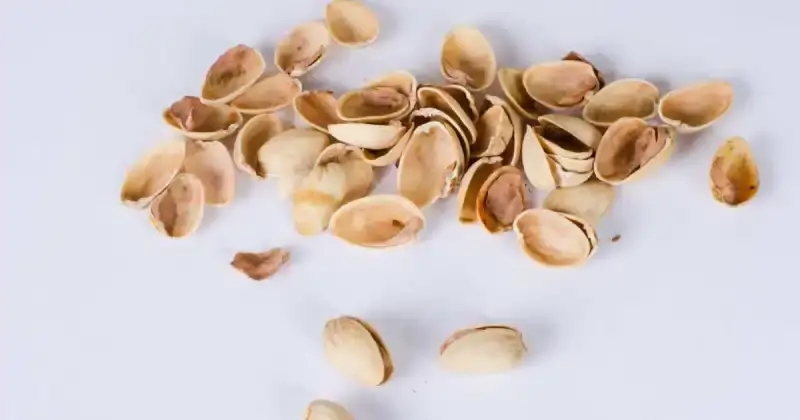
Warm Environment
Consider keeping your compost heap in a warm location because heat speeds up decomposition. Place your compost bin in a spot that receives good sunlight, as the sun will naturally heat the compost.
Consider insulating your pile with straw bales or thick cardboard during colder months. Aim for around 140 degrees Fahrenheit, which is the ideal temperature for composting. Monitor the pile’s internal temperature with a thermometer or by feeling its warmth with your hand. If you’ve balanced your carbon-to-nitrogen ratio appropriately, your heap should heat up and break down correctly.
Check pH Levels
The pH scale ranges from 0 to 14, where 0 is highly acidic, 7 is neutral, and 14 is highly basic. A pH level of 6-7 is ideal for composting, as it allows for the most efficient breakdown of organic matter. Use pH test strips, a digital pH meter, or a soil test kit to check the pH of your compost. If it’s too acidic, sprinkle garden lime to raise the pH. If it is too alkaline, add garden sulfur or pine needles to lower the pH.
There is so much debate about how to compost correctly for backyard growers, especially new gardeners, who can feel overwhelmed by the sheer volume of information. In reality, composting is a straightforward process that anyone can understand and master. This video below delves into critical composting concepts anyone can use to succeed – even if you’re a complete novice!
Dealing With Salted Pistachio Shells: Recycle, Reuse!
Most of the commercial pistachio shells are salted. Salting not only enhances the flavor but also acts as a preservative. As you may already know, salt and soil don’t get along great. That’s why salted pistachio shells are generally not recommended as an addition to your compost. The salt can harm the beneficial microbes in your compost pile and lead to increased soil salinity, affecting plant health and production.
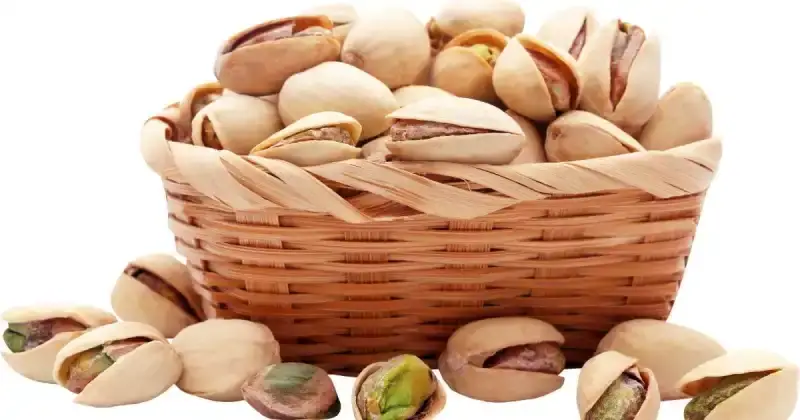
If you have salted shells, finding alternative ways to reuse pistachio shells rather than adding them to your compost heap is better. In our mission to self-sustainability, we aim to waste nothing and put everything to good use. So here are some alternative uses for salted pistachio shells: 8
List Of Ideas For Reusing Salted Pistachio Shells
- Craft Projects: Pistachio shells can create art like mosaics or ornaments, making your garden aesthetically beautiful since they can be painted and glued together.
- Drainage Layer: This is one of the many alternatives to composting pistachio shells by using them at the bottom of potted plants to improve drainage.
- Fire Starter: Dried pistachio shells also work as kindling as they catch fire quickly.
- Smoking Meat: Some people use pistachio shells as a unique way to add flavor when smoking meats.
- Cleaning Tools: The abrasive texture of pistachio shells can help scrub away grime on pots and pans.
- Cat Toys: Fill an old sock with shells to create a crinkly cat toy.
- Animal Bedding: Crushed shells can be used as bedding for small pets like hamsters or gerbils.
- Potpourri: Add some essential oils to the shells for a homemade potpourri.
- Board Games: Perhaps one of the more unique applications is making use of painted pistachio shells as counters or tokens in board games.
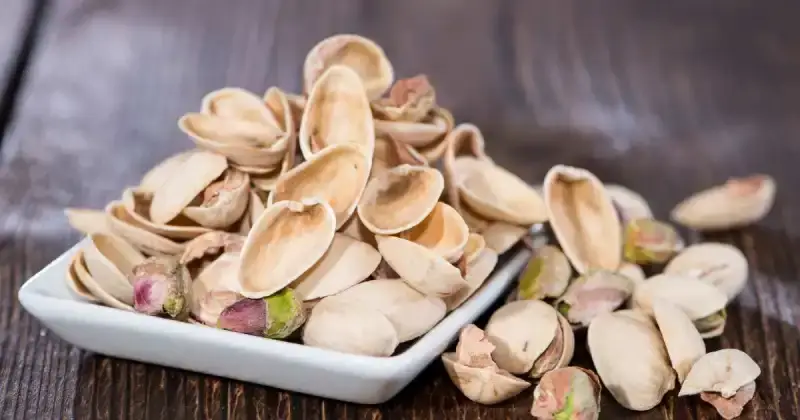
Conclusion
Adding pistachio shells to your compost is more than a clever idea – it’s a path to a greener garden and a happier planet. These shells, rich in carbon, potassium, and phosphorus, not only enhance the nutrient content of compost but also improve soil aeration and drainage. While they decompose slowly, releasing nutrients over time, they also deter pests like slugs due to their sharp edges.
For those with salted pistachio shells, numerous creative ways exist to repurpose them, from craft projects to aiding in meat smoking. Salty shells should not be added to any compost pile or garden bed, as increased soil salinity can severely harm your crops.
Embrace the joy of turning those leftover shells into black gold, nurturing the earth for future generations. Next time you enjoy those tasty pistachios, remember that the shells have a second life waiting to be used in the compost pile.
Do you compost with unsalted pistachio shells? What’s your composting success story with this popular snack food? Drop us a line in the comments below and share!
SOURCES
- The Effects Of Pistachio Nut Hull Compost On Soil Fertility: A Comparative Study With Manure
- MDPI – The Impact Of Nutshell Biochar On The Environment As An Alternative Fuel Or As A Soil Amendment
- Frontiers – Nut Shells As Adsorbents Of Pollutants: Research And Perspectives
- Wikipedia – Pistachio
- ResearchGate – Application Of Pistachio Waste As Organic Manure In Sustainable Agriculture
- ScienceDirect – Pistachio Waste Management Using Combined Composting-Vermicomposting Technique: Physico-Chemical Changes And Worm Growth Analysis
- National Library Of Medicine, National Center For Biotechnology Information – Integrating Aeration And Rotation Processes To Accelerate Composting Of Agricultural Residues
- National Library Of Medicine, National Center For Biotechnology Information – When Salt Meddles Between Plant, Soil, And Microorganisms

